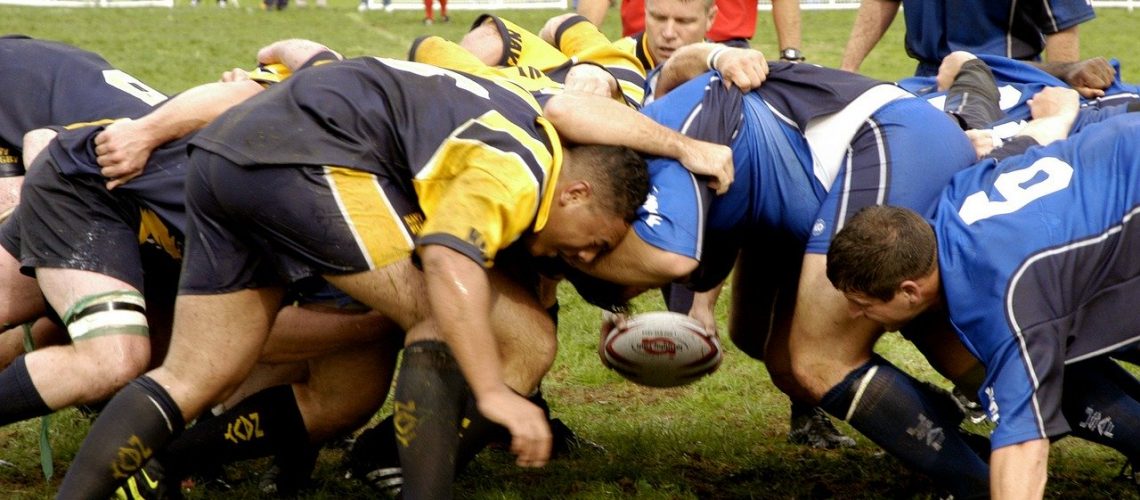First of all: Do you want to develop your team or company in measurable and fun ways? Here you can try out software tool for agile team development completely for free:
Sprint, backlog, definition of done - if you work in an agile Scrum team, you know that these terms have nothing to do with 100-meter runs or backlogs. But a little refresher can't hurt. So what does agile work mean and what is behind this technical Chinese? In other words: what is Scrum?
"Scrum - what is it" 1: What does Scrum actually mean?
Everyone loves definitions. So let's start with a definition of the term: Scrum comes from English and means something like "scrum". In rugby, the ball is passed from player to player during the "Scrum", in order to secure the ball for your own team. It is about teamwork; about small steps to achieve common goals. If you now think that every team is ultimately an association of people with a common goal, you are right. That is why we are now showing what is special about a Scrum team.
Who is part of the team?
Originally there was a split in agile work: members of the team were called “pigs”, everyone else was “chickens”. It goes back to a joke about commitment and involvement:
A chicken and a pig were brainstorming ...
Chicken: Let’s start a restaurant!
Pig: What would we call it?
Chicken: Ham & #8217; n & #8216; Eggs!
Pig: No thanks. I & #8217; d be committed, but you & #8217; d only be involved!
Today, the view that really everyone involved should be committed is more prominent. But who are all the people involved? There are three central roles in Scrum teams: the Product Owner, the Scrum Master and the development team (Fowler, 2019). If these three roles harmonize perfectly in their responsibilities and tasks, the team can work together successfully.
- Product Owner: The product owner takes on the role of the link between customer and team. He mainly has an eye on the customer's requirements and communicates them to the development team. He does not intervene in the sprints, i.e. in the actual development phases of the product.
- Scrum Master: The role of the Scrum Master can be described as that of a service provider and manager. His goal is that the process runs smoothly and that the development team has all the resources it needs to ensure that the product can be successfully developed. Among other things, he moderates the Team retrospectives, which serve the further development of the team.
- development team: These are self-organized, interdisciplinary teams that take care of the development of products. You distribute the tasks independently to the individual team members. At the Daily Scrum discuss progress and challenges that must be overcome by the end of the sprint. The sprint will be concluded with a retrospective moderated by the Scrum master.
"Scrum - what is it" 2: How do scrum teams work?

Schwaber, K. & Sutherland, J. (2017)
The sprint forms the heart of the team's work. This is a fixed period, which is concluded with a clearly defined “done”, ie a finished product increment. Sprint planning defines the time horizon, the way of working and the goals. One takes place every day Daily Scrum instead of discussing the results of the last 24 hours and looking at the tasks for the next 24 hours. These meetings improve team communication (Zumsteg, 2019). When the set time for the sprint is over, in Sprint review checks whether the goals have been achieved and the product increment is completed.
And, can you answer the question "Scrum, what is that" now?
Test Echometer now for free & discover new retro opportunities for your teams!
One more thing, however, because the sprint is not yet over. In agile work it is important to finish one Retrospective to check what went well in the last sprint and what went less well. In the retrospective, measures can also be decided so that the next sprint runs even better than the last one (Schwaber & Sutherland, 2017)
Working successfully as a Scrum team
The success of scrum teams is mainly attributed to the fast, self-organized way of working. This is supported by regular team meetings, the retrospectives. So yours too Team can be successful in the agile world, we have put together a few methods that you can try out. Just have a look!
"Scrum - what is it": References
Fowler, FM (2019). Scrum Team Roles. In: Navigating Hybrid Scrum Environments. Berkeley: Apress.
Schwaber, K. & Sutherland, J. (2017). Scrum Guide. Retreived from: https://www.dasscrumteam.com/de/scrum.
Zumsteg, M. (2019). Conflict management, team work engagement and psychological security in Scrum teams. Wiesbaden: Springer.










